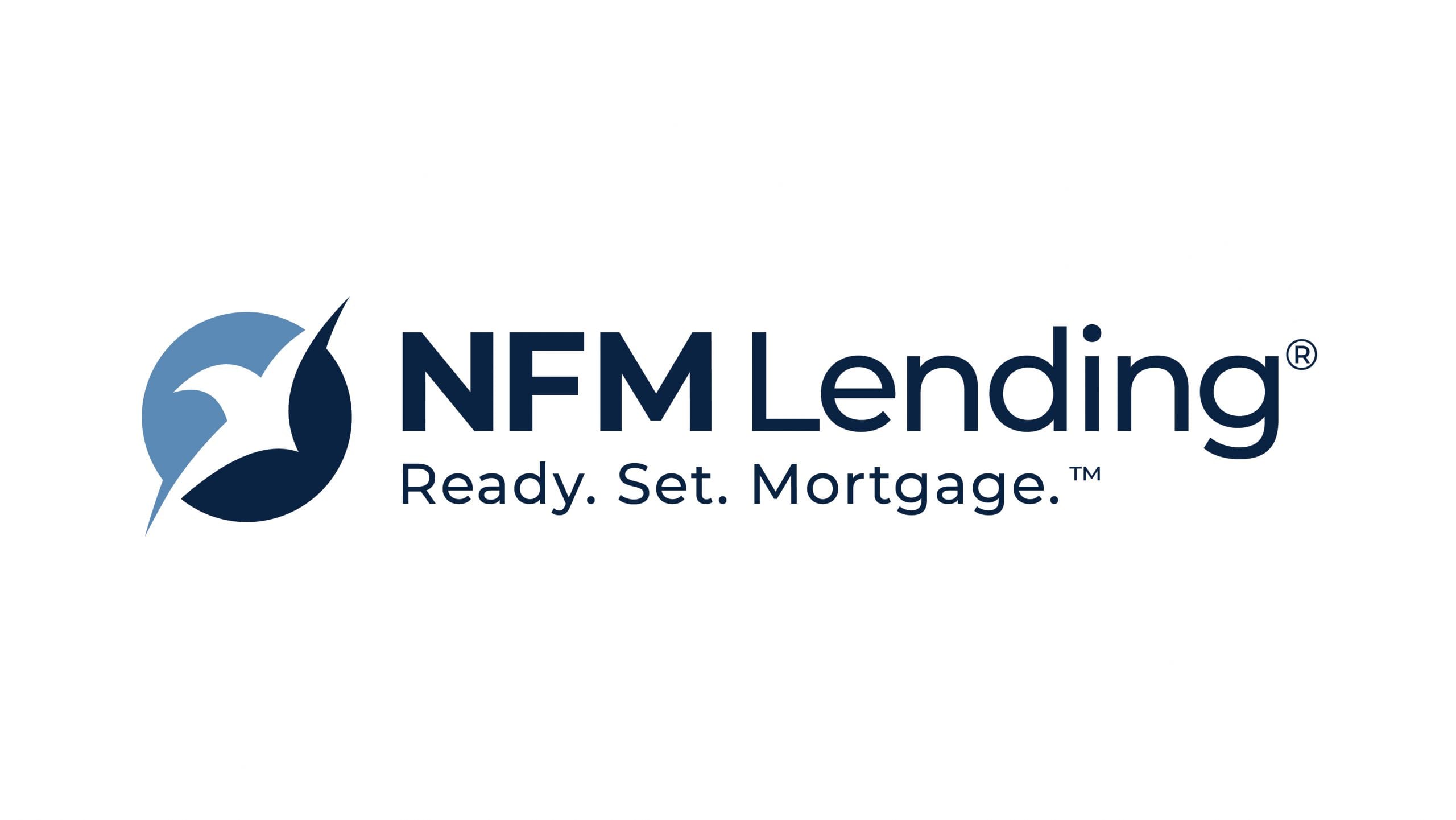Introduction
Welcome to the world of mortgage lending! Starting your own mortgage lending company can be a rewarding and lucrative venture. As a mortgage lender, you will play a crucial role in helping individuals and families secure financing for their dream homes or investment properties.
However, embarking on this journey requires careful planning, research, and an understanding of the mortgage industry. Whether you have prior experience in the field or are starting fresh, this guide will provide you with the necessary steps to start your own mortgage lending company.
The mortgage lending industry is a highly regulated and competitive field. It involves understanding complex financial concepts, analyzing creditworthiness, and providing excellent customer service. As a mortgage lender, you will be responsible for evaluating loan applications, determining interest rates, and guiding borrowers through the mortgage process.
Before diving into the world of mortgage lending, it’s important to note that this guide is intended for informational purposes only. It is always advisable to consult with legal and financial professionals to ensure compliance with local laws and regulations. With that said, let’s begin our journey into starting a mortgage lending company!
Step 1: Research and Planning
The first crucial step in starting a mortgage lending company is to conduct thorough research and develop a comprehensive plan. This involves gaining a deep understanding of the mortgage industry, identifying potential challenges and opportunities, and establishing a clear roadmap for your business.
Begin by researching the current state of the mortgage market. Stay updated on industry trends, interest rates, and regulations that may impact your business. Determine the demand for mortgage lending services in your target area and identify any gaps or niches that you can fill.
Next, analyze your competition. Identify the mortgage lenders operating in your market and study their business models, target audience, rates, and services. This will help you differentiate your offerings and develop a competitive advantage.
As part of your research, also consider the financial aspects of starting a mortgage lending company. Determine the initial capital required to set up your business, including licensing fees, technology costs, and staffing expenses. Additionally, calculate ongoing expenses such as rent, utilities, marketing, and loan servicing.
Develop a detailed business plan that outlines your company’s vision, mission, goals, target market, and marketing strategies. Include a thorough financial analysis, projected income, and expenses for the first few years. This plan will serve as a roadmap for your business and will be vital when seeking financing from lenders or investors.
Furthermore, ensure that you have a thorough understanding of the legal and regulatory requirements for establishing a mortgage lending company. This may include obtaining the necessary licenses, certifications, and registrations from regulatory bodies in your jurisdiction. Consult with legal professionals to ensure compliance with all applicable laws and regulations.
Gather a team of experienced professionals who can support you in your venture, such as attorneys, accountants, and mortgage industry experts. Surrounding yourself with knowledgeable advisors will help you navigate the complexities of the mortgage lending industry.
By conducting comprehensive research and planning, you will lay a solid foundation for your mortgage lending company. This step is crucial to ensure that you are well-prepared to face the challenges and seize the opportunities that lie ahead.
Step 2: Get the Necessary Licenses and Certifications
Before you can start operating as a mortgage lender, it is crucial to obtain the necessary licenses and certifications. The specific requirements may vary depending on your jurisdiction, so it is important to research and understand the legal obligations and regulations in your area.
Typically, you will need to obtain a mortgage broker or mortgage lender license. This involves submitting an application to the appropriate regulatory agency and meeting specific criteria such as demonstrating financial stability, completing pre-licensing education, and passing an examination.
In addition to obtaining a license, you may also need to secure other certifications or registrations. For example, you might need to register with the Nationwide Mortgage Licensing System and Registry (NMLS) in the United States. This system allows mortgage professionals to manage their licenses and provides a platform for consumer protection.
It is essential to stay updated on any changes or updates to the licensing requirements. Regulatory bodies often impose ongoing education and renewal obligations to ensure that mortgage lenders stay abreast of industry best practices and compliance standards.
Working with legal professionals who specialize in the mortgage industry can be immensely helpful in navigating the licensing process. They can guide you through the application procedures, assist with the necessary paperwork, and ensure that you are compliant with all regulatory requirements.
Keep in mind that licensing and certification requirements may not only pertain to the company as a whole but also to individual loan officers or brokers employed by your company. Make sure that all employees are properly licensed and trained to meet the standards set by the regulatory authorities.
By obtaining the necessary licenses and certifications, you demonstrate your commitment to maintaining ethical standards and regulatory compliance. This not only safeguards you from legal repercussions but also instills confidence and trust among your clients, ultimately contributing to the success and credibility of your mortgage lending company.
Step 3: Develop a Business Plan
Developing a comprehensive business plan is a crucial step in starting a mortgage lending company. A well-crafted business plan serves as a roadmap, outlining your company’s goals, strategies, and financial projections. It acts as a guiding document that helps you stay focused and make informed decisions as you build and grow your business.
When creating your business plan, start by defining your company’s mission and vision. What sets your mortgage lending company apart from the competition? What values and principles will guide your operations? Clarifying your company’s purpose will help you establish a strong foundation and communicate your unique value proposition to potential clients and partners.
Next, identify your target market. Are you focusing on a specific geographic area? Will you cater to first-time homebuyers, real estate investors, or a particular demographic? Understanding your target market will influence your marketing strategies, product offerings, and pricing models.
Conduct a thorough market analysis to assess the demand for mortgage lending services, analyze your competition, and identify potential opportunities and challenges. This analysis will help you refine your business approach and develop strategies to differentiate your company in the market.
Outline your product and service offerings, including the types of mortgage loans you will provide, the interest rates, and any additional services you may offer, such as credit counseling or loan refinancing. Consider partnering with other financial institutions or lenders to expand your product range and address the diverse needs of your clients.
The financial section of your business plan is crucial for securing funding and evaluating the financial feasibility of your mortgage lending company. Include projected income and expenses, cash flow analysis, and financial ratios. Discuss your capital requirements, potential funding sources, and how you plan to achieve profitability.
Finally, develop a marketing and sales strategy to promote your mortgage lending services. Outline your branding strategy, online and offline marketing tactics, and how you plan to generate leads and attract clients. Consider leveraging digital marketing techniques, such as search engine optimization (SEO) and social media advertising, to reach a wider audience and establish your online presence.
A well-developed business plan demonstrates your professionalism, preparedness, and commitment to success. It will serve as a valuable tool when seeking financing from lenders or investors who want to understand the viability and potential return on investment of your mortgage lending company.
Remember to review and update your business plan regularly as your company evolves and market conditions change. A flexible and adaptable plan will help you navigate challenges and seize new opportunities in the dynamic mortgage lending industry.
Step 4: Determine your Target Market and Marketing Strategy
Identifying your target market is a crucial step in establishing a successful mortgage lending company. Understanding the needs, preferences, and characteristics of your target audience will guide your marketing efforts and allow you to tailor your services to their specific requirements.
Start by conducting market research to analyze the demographics and psychographics of potential borrowers. Consider factors such as age, income level, employment status, creditworthiness, and homeownership goals. This information will help you create customer profiles and identify the key segments within your target market.
Once you have identified your target market, develop a marketing strategy that effectively reaches and engages your audience. Start by defining your unique selling proposition (USP). What sets your mortgage lending company apart from the competition? Highlighting your USP in your marketing messages will help you stand out and connect with potential borrowers.
Invest in creating a strong online presence through your website and social media channels. Optimize your website for search engines to improve your visibility and attract organic traffic. Utilize social media platforms to engage with your target audience, share valuable content, and establish your expertise in the mortgage industry.
Consider leveraging paid digital advertising platforms, such as Google Ads or Facebook Ads, to increase your reach and generate leads. Develop compelling ad campaigns that highlight your competitive rates, flexible loan options, or exceptional customer service to drive traffic to your website or landing pages.
Networking and building relationships within your local community can also be an effective marketing strategy. Attend industry events, join professional associations, and establish partnerships with local real estate agents, financial planners, and builders. Word-of-mouth referrals can be incredibly powerful in the mortgage lending industry.
Offering valuable content through articles, blog posts, or videos can help establish trust and position your company as a trusted advisor. Educate your audience on mortgage-related topics, provide insights into the homebuying process, and offer tips on improving creditworthiness. By providing valuable information, you will build credibility and attract potential borrowers.
Consider implementing a referral program where you incentivize your satisfied clients to refer their friends and family to your mortgage lending company. Offering rewards or discounts for successful referrals can help drive word-of-mouth marketing and expand your client base.
Regularly review and analyze your marketing efforts to determine what strategies are generating the best results. Use data analytics tools to measure key performance indicators (KPIs) such as website traffic, lead conversion rates, and customer acquisition costs. This will help you refine your marketing approach and optimize your resources.
By understanding your target market and implementing an effective marketing strategy, you can position your mortgage lending company for success. Stay adaptable and open to testing new marketing tactics to find the approaches that work best for your specific target audience.
Step 5: Establish Relationships with Lenders and Investors
In the mortgage lending industry, it is crucial to establish strong relationships with lenders and investors. These relationships will not only provide you with a steady flow of capital but also open doors to new opportunities and enhance your credibility in the market.
Start by researching and identifying reputable lenders and investors who align with your company’s values and goals. Look for lenders that specialize in the types of mortgage loans you plan to offer or have experience in your target market. Similarly, seek out investors who have a history of supporting mortgage lending ventures.
Attend industry conferences, networking events, and trade shows to connect with potential lenders and investors. Take the time to introduce yourself, discuss your business model, and learn more about their lending or investment criteria. Building personal connections and establishing trust are key to developing successful partnerships.
Consider joining professional associations and organizations in the mortgage lending industry. These groups often provide networking opportunities, educational resources, and access to industry experts. Engaging actively in these communities can help you establish valuable relationships with lenders and investors.
When approaching lenders and investors, be prepared with a compelling business plan that outlines your company’s vision, financial projections, and growth strategies. Clearly articulate the value your mortgage lending company brings to the market and how lenders or investors stand to benefit from partnering with you.
Highlight your company’s unique selling proposition (USP), differentiating factors, and competitive advantages. Emphasize the experience and expertise of your team, the quality of your loan portfolio, and any innovative technology or processes that set your company apart from others in the industry.
Be open to exploring different financing options. Lenders may offer traditional mortgage loans, lines of credit, or warehouse lines, while investors may provide equity investments or fund loan originations. Evaluate the terms, conditions, and requirements of each option to determine what aligns best with your long-term goals and financial needs.
Maintain open lines of communication with your lenders and investors. Regularly update them on your company’s performance, share key metrics and industry insights, and address any questions or concerns they may have. Building a strong rapport with your partners will help foster long-term relationships and potentially lead to future opportunities for growth.
Lastly, stay informed about regulatory changes and compliance requirements in the mortgage lending industry. Understand the expectations and standards that lenders and investors have in terms of risk management, loan quality, and compliance. Demonstrating your commitment to regulatory compliance will instill confidence in your partners.
Establishing positive relationships with lenders and investors is vital to the success and growth of your mortgage lending company. Utilize networking opportunities, showcase your expertise, and be proactive in nurturing partnerships to secure the funding and support you need to thrive in the industry.
Step 6: Set up your Office and Technology Infrastructure
Setting up a well-equipped office and implementing a robust technology infrastructure are essential for the smooth operation of your mortgage lending company. A well-designed workspace and efficient technology systems will enable you to maximize productivity, streamline processes, and provide exceptional service to your clients.
Start by finding a suitable location for your office that is convenient for your team and accessible to your target market. Consider factors such as proximity to real estate agents, banks, and legal professionals who play a role in the mortgage lending process. Ensure that your office space meets the necessary regulatory requirements and provides a professional and welcoming environment for both employees and clients.
In terms of technology infrastructure, invest in reliable hardware such as computers, printers, scanners, and telecommunication systems. Modernize your workflow by leveraging digital tools and software that can automate manual processes, enhance efficiency, and increase collaboration among team members.
Implement a customer relationship management (CRM) system that will help you track and manage client interactions, maintain contact information, and streamline your marketing efforts. A CRM system can also help you generate reports, analyze data, and measure the success of your marketing campaigns.
Consider investing in mortgage origination software or loan origination systems (LOS), which streamline and automate the loan application and underwriting process. These systems can help track borrower details, verify information, calculate loan parameters, and facilitate smoother communication with borrowers, lenders, and investors.
Ensure that your technology infrastructure is secure and compliant with data protection laws. Implement robust cybersecurity measures, such as firewalls, encryption, and regular data backups. Make sure you have policies in place to protect sensitive client information and educate your staff about data security best practices.
Additionally, create an online presence through your website, social media platforms, and other digital marketing channels. Utilize search engine optimization (SEO) techniques to improve your website’s visibility in search engine results and attract organic traffic. Develop engaging content that educates and informs your target audience about the mortgage process and industry trends.
Train your employees on the proper use of technology systems and provide ongoing support to ensure they can effectively leverage the tools in their daily tasks. Regularly evaluate and update your technology infrastructure to stay current with industry advancements and provide the best possible service to your clients.
By setting up a well-equipped office and implementing a robust technology infrastructure, you will create a professional and efficient environment for your mortgage lending operations. This will enhance productivity, streamline processes, and enable you to deliver exceptional service to your clients in a fast-paced and technology-driven industry.
Step 7: Hire and Train Employees
Building a talented and skilled team is crucial for the success of your mortgage lending company. Hiring and training employees who are knowledgeable, experienced, and customer-focused will ensure that your operations run smoothly and your clients receive exceptional service throughout the loan process.
Start by identifying the key roles and positions needed in your mortgage lending company. This may include loan officers, underwriters, processors, closers, and administrative staff. Clearly define the responsibilities and qualifications required for each role to attract suitable candidates.
When hiring, seek out candidates with mortgage lending experience or individuals who have a strong background in finance, banking, or sales. Look for individuals who possess excellent communication and interpersonal skills, as they will be interacting with clients, real estate agents, and lenders on a regular basis.
Implement a thorough and structured recruitment process. Advertise job openings on relevant job boards, professional associations, and social media platforms. Screen resumes, conduct interviews, and check references to ensure you are selecting the most qualified candidates for the positions.
Once you have hired your employees, provide comprehensive training to ensure they understand your company’s culture, vision, and operations. Familiarize them with the mortgage lending process, loan products, underwriting guidelines, and any specific software or technology systems used in your company.
Invest in ongoing training and professional development to keep your team updated with industry trends and regulatory changes. Offer opportunities for your employees to attend workshops, seminars, and industry conferences to enhance their knowledge and skills. Encourage them to pursue relevant certifications or designations to further their expertise.
In addition to technical skills, emphasize the importance of exceptional customer service. Train your employees on effective communication, problem-solving, and building strong relationships with clients. Emphasize the value of empathy, integrity, and professionalism in all client interactions.
Create a positive and supportive work environment that encourages teamwork, collaboration, and continuous improvement. Foster a culture of open communication, where employees feel comfortable sharing ideas, providing feedback, and contributing to the growth and success of the company.
Regularly assess the performance of your employees through performance reviews and goal-setting sessions. Provide constructive feedback, recognize achievements, and address any areas for improvement. Offer opportunities for career advancement or additional responsibilities to motivated and high-performing employees.
Remember that hiring and training employees is an ongoing process. As your mortgage lending company grows, you may need to hire additional staff or adjust your team composition. Stay attuned to the needs of your business and invest in the professional development of your employees to ensure a skilled and motivated workforce.
Step 8: Develop a Loan Process and Underwriting Guidelines
Developing a well-defined loan process and underwriting guidelines is essential for the smooth operation of your mortgage lending company. A clear and structured approach will help streamline loan origination, ensure compliance with regulations, and maintain consistency in decision-making.
Start by mapping out the loan process from start to finish. Identify the key steps, from initial borrower contact to loan origination, underwriting, and closing. Define the required documentation and information at each stage, and establish timelines to ensure efficient processing of loan applications.
Create underwriting guidelines that outline the criteria for evaluating borrower qualifications and loan suitability. This includes requirements for credit scores, debt-to-income ratios, employment history, and property appraisal standards. Consider consulting with underwriting experts or legal professionals to ensure your guidelines align with industry best practices and regulatory requirements.
Develop clear and transparent communication channels between different stakeholders involved in the loan process. This may include loan officers, underwriters, processors, and closers. Regularly update and train your team on any changes to the loan process or underwriting guidelines to ensure consistency and compliance.
Implement technology solutions to streamline the loan process, such as loan origination software (LOS) or customer relationship management (CRM) systems. These tools can help automate data collection, document management, and communication, improving efficiency and reducing errors.
Establish quality control measures to ensure the accuracy and integrity of loan files. Regularly audit loan files to identify any gaps or errors and implement corrective actions. Implement robust checks and balances to ensure compliance with applicable regulations and mitigate potential risks.
Collaborate with legal professionals or compliance experts to ensure your loan process and underwriting guidelines align with all relevant laws and regulations. Compliance with regulations such as the Equal Credit Opportunity Act (ECOA), Fair Housing Act (FHA), and Truth in Lending Act (TILA) is essential to avoid legal issues and ensure fair and non-discriminatory lending practices.
Regularly review and update your loan process and underwriting guidelines to stay abreast of industry best practices and changing market conditions. Monitor loan performance and identify any areas for improvement to enhance efficiency, minimize risk, and provide a better borrower experience.
By developing a well-defined loan process and underwriting guidelines, you ensure consistency, efficiency, and compliance in your mortgage lending operations. This will contribute to the success and reputation of your company in the industry while providing borrowers with a seamless and transparent lending experience.
Step 9: Market your Mortgage Lending Company
Marketing plays a crucial role in the success of your mortgage lending company. Effective marketing strategies will help you raise awareness, attract potential borrowers, and differentiate your services in a competitive market. Here are some key steps to market your mortgage lending company:
1. Define your target audience: Identify the demographics, needs, and preferences of your ideal borrowers. This will enable you to tailor your marketing messages and strategies to resonate with your target market.
2. Develop a strong brand: Create a compelling brand identity that reflects your company’s values and differentiates your services. Design a professional logo, website, and collateral materials that convey your brand message and visually appeal to your target audience.
3. Establish your online presence: Build a user-friendly website that highlights your services, rates, and contact information. Invest in search engine optimization (SEO) to improve your website’s visibility in search engine results. Utilize social media platforms and content marketing to engage with your audience and showcase your industry expertise.
4. Leverage online advertising: Consider running targeted pay-per-click (PPC) advertising campaigns on platforms like Google Ads or social media channels to reach potential borrowers. Optimize your ads for relevant keywords and demographics to maximize visibility and generate quality leads.
5. Forge strategic partnerships: Collaborate with real estate agents, builders, and other professionals in the industry who can refer clients to your mortgage lending company. Attend industry events and network with potential referral partners to establish mutually beneficial relationships.
6. Offer educational content: Develop informative blog posts, articles, and videos that address common questions and concerns borrowers may have. Share valuable insights about the mortgage process, financial planning, or homebuying tips to position your company as a trusted advisor.
7. Showcase customer testimonials: Request satisfied borrowers to provide testimonials or reviews of their experience working with your mortgage lending company. Display these testimonials on your website and social media platforms to build trust and credibility with potential borrowers.
8. Engage in community activities: Participate in local events, sponsor charitable initiatives, and engage with community organizations. This helps build brand awareness and demonstrates your commitment to supporting the communities you serve.
9. Monitor and analyze marketing efforts: Use data analytics tools to track the performance of your marketing activities. Monitor website traffic, lead generation, and conversion rates to evaluate the effectiveness of your strategies and make informed decisions for further optimization.
10. Provide exceptional customer service: Deliver an exceptional borrower experience from start to finish. Positive word-of-mouth referrals from satisfied clients can be a powerful marketing tool and contribute to the growth of your mortgage lending company.
Remember that marketing is an ongoing process. Continuously evaluate and adjust your strategies to align with market trends and changing borrower preferences. Stay adaptable and innovative to stay ahead of the competition and attract potential borrowers to your mortgage lending company.
Step 10: Provide Exceptional Customer Service
Providing exceptional customer service is vital for the long-term success of your mortgage lending company. When borrowers have a positive experience working with you, they are more likely to recommend your services to others and become repeat customers. Here are some key steps to ensure exceptional customer service:
1. Clear communication: Maintain open lines of communication with borrowers throughout the loan process. Respond promptly to inquiries, provide updates on the status of their loan application, and ensure they are aware of any necessary documentation or requirements.
2. Personalized approach: Treat each borrower as an individual with unique needs and circumstances. Take the time to understand their goals and concerns and tailor your recommendations and solutions accordingly.
3. Transparency and honesty: Be transparent about the loan terms, fees, and any potential challenges or risks. Provide clear explanations about the mortgage process and ensure borrowers have a thorough understanding of their options and obligations.
4. Timely and efficient processing: Strive to process loan applications and underwrite loans in a timely manner. Set realistic timeframes and deliver on your commitments. Clear communication about potential delays or issues is crucial to managing borrower expectations.
5. Educate borrowers: Guide borrowers through the loan process by providing educational resources and answering their questions. Offer guidance on credit improvement, down payment options, and loan programs that align with their goals.
6. Flexibility and empathy: Understand that each borrower’s situation is unique, and be empathetic to their needs. Provide flexible solutions whenever possible to accommodate their circumstances and help them achieve their homeownership or investment objectives.
7. Post-loan support: Don’t consider the borrower relationship as complete once the loan closes. Offer ongoing support and assistance, such as refinancing options, guidance on mortgage payments, and information on additional financial services they may benefit from.
8. Feedback and continuous improvement: Regularly seek feedback from borrowers about their experience with your mortgage lending company. Actively listen to their suggestions and make improvements based on their input. This shows that you value their opinions and are committed to delivering the best customer service possible.
9. Train and empower your team: Provide comprehensive training to your employees on delivering exceptional customer service. Encourage them to take ownership of their responsibilities and provide them with the authority to resolve issues promptly and effectively.
10. Monitor customer satisfaction: Implement systems to measure customer satisfaction, such as post-closing surveys or online reviews. Monitor these metrics to identify trends, address areas of improvement, and celebrate successes within your customer service team.
Providing exceptional customer service is not only about meeting the needs of individual borrowers but also about building a reputation for excellence in the mortgage lending industry. By consistently delivering exceptional service, you establish trust, loyalty, and long-term relationships with your borrowers, which can lead to the growth and success of your mortgage lending company.
Conclusion
Congratulations on completing the ten essential steps to start and run a successful mortgage lending company. From conducting thorough research and obtaining the necessary licenses to developing a business plan, establishing relationships with lenders and investors, and providing exceptional customer service, each step is crucial for your company’s success.
Starting a mortgage lending company requires careful planning, dedication, and a deep understanding of the industry. By conducting thorough research and developing a comprehensive plan, you set yourself up for success and reduce potential risks.
Obtaining the necessary licenses and certifications ensures that your mortgage lending company operates legally and ethically. Establishing relationships with lenders and investors provides the necessary capital and support for your operations.
Developing a loan process, underwriting guidelines, and providing exceptional customer service are key to delivering a seamless and satisfying experience to borrowers. By consistently exceeding their expectations, you build trust, loyalty, and generate positive word-of-mouth referrals.
Remember, the mortgage lending industry is dynamic, and regulatory changes can impact your operations. It’s important to stay updated on industry trends, compliance standards, and continuously improve your business practices to stay ahead of the competition.
As you navigate the complexities of the mortgage lending industry, surround yourself with knowledgeable professionals, seek industry-specific advice, and always prioritize the needs of your borrowers. Their satisfaction and success should remain at the heart of your operations.
Starting a mortgage lending company is an exciting and rewarding endeavor. By following these steps and embracing continuous learning and improvement, you can establish a reputable and thriving mortgage lending company that makes homeownership dreams a reality for countless individuals and families.

























